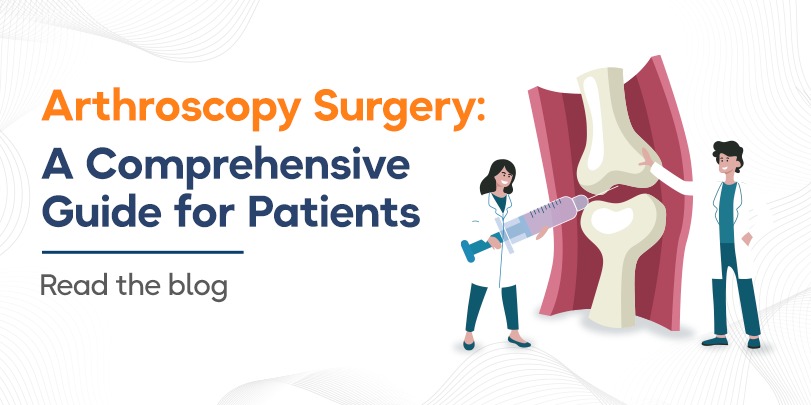


Joints are one of the most significant pain areas globally. Almost everyone goes through joint pain in one form or another throughout their lives. This could be due to a wide number of causes from arthritis, gout, overuse, infections, injuries and so on. From a dull throb that doesn’t go away to the feeling of sharp knives in your joints, pain can come in any form. However, sometimes the pain becomes too much, comes too frequently or is chronic.
When it starts affecting your life and how much you can function, it becomes a threat to your way of living. This is when you should start looking for solutions to pain. Over-the-counter medicines work to an extent. Rather than keeping the focus on how to elevate the pain, it is better to diagnose the main cause. One of the best ways to achieve that is by arthroscopic surgery. Here is a complete guide.
Arthroscopy is a minimally invasive surgical procedure used to diagnose joint issues. The doctor can use arthroscopy to view inside a joint without making a large incision. While this could be for purely diagnostic reasons, it is also to help repair problems. With the help of one small incision, additional small incisions and narrow surgical instruments, orthopedic surgeons can even fix some types of joint injury during arthroscopy.
While Arthroscopy can be performed on any limb with a joint, the more common ones are arthroscopic knee surgery and total hip arthroscopy. This is usually undertaken when the knee joint or the cartilage, soft tissue or ligament within is inflamed or aching.
Some components of arthroscopy are quite common, even though the experience varies based on why you’re having the operation and which joint is involved. Once you are brought into the operation room and lay on the bed, your hand or forearm will receive an intravenous catheter from a nurse.
Depending on the type of surgery you are going to undergo, our doctors will carefully choose whether to give General / Spinal anesthesia for the particular procedure.
When compared and contrasted against traditional surgery, or open surgery, arthroscopic techniques present a bouquet of benefits.
Since there is a tiny incision through which the orthopaedic surgeons perform all operative procedures arthroscopically, it keeps the area mostly sterile which reduces the chances of other infection transmitting.
Since arthroscopy requires imaging, this allows the surgeon to diagnose injuries, repair or remove damaged tissue, repair tendons view the joint space and possible complications without the need for traditional open surgery.
Every arthroscopy procedure, including knee arthroscopy, is a minimally invasive procedure. This drastically reduces the recovery time. A shorter time to heal makes it easier to get back to your routine. Plus, you may benefit from less pain!
While this is a much safer procedure than traditional surgery, there are a few conditions as well that you would benefit from following. There are two stages of preparation needed to ensure a smooth procedure.
There may be a certain list of medications that your healthcare provider asks you to avoid. Make sure you follow these instructions carefully for a safe and smooth procedure. Some medications can lead to serious harm if not stopped, for example, blood thinning pills may stop blood clots from forming.
Fasting is the best idea before an arthroscopy. Your doctor may recommend certain food items not to be eaten or ingested.
Make sure there is someone to drive you back home. While this is a relatively safe procedure, there is a chance you may fall asleep at the wheel, or flare up synovitis – swelling in the affected joint – based on your joint conditions.
Free loose clothing is highly recommended. Tight clothes can mash your bones together leading to problems in the future.
There are a few things you should do following your surgery to help.
Just because you’re not in the operating room anymore and have moved to the outpatient area does not mean all the problems inside your joints are healed. Physical therapy is very important at this stage. Always make sure you are doing the prescribed exercise. This is an integral part of your rehabilitation. It ensures your range of motion stays the same and doesn’t lead to additional issues in the affected joint. Bandages may help reduce swelling and help tam synovium but always ask your surgeon first.
Remember that this is not a miracle cure-all. It takes a little bit of time. While this is a procedure that allows for faster healing, it is not instant. Be patient with yourself and soon, it will all be better.
Motion is good but your joint needs to heal. Soft exercises like yoga or tai chi help, but don’t jump into workouts.
Don’t be shy when it comes to your health. Use any devices that you get better faster, including crutches.
If you have more swollen areas, it is not always advisable to tie a tourniquet around it and call us. Make sure you don’t take any steps that lead to a pitfall of more pain. Call us or book appointments for regular checkups and at any other time when you are wondering what to do.
At Radiance Hospitals, your health is our highest priority. This is why we only have the best arthroscopic surgeons and state-of-the-art infrastructure making us one of the best places for Arthroscopy surgery in Ahmedabad and the world over. Choose to give yourself the best. Choose Radiance Hospitals.
Comments